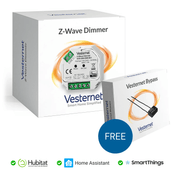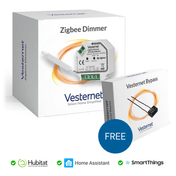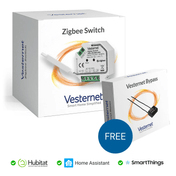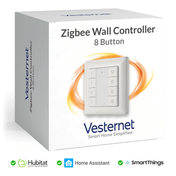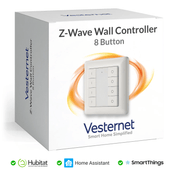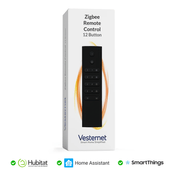Modern smart homes depend heavily on robust network infrastructure to function effectively, yet many homeowners struggle with connectivity challenges that can undermine their entire automation system. As the number of connected devices continues to grow, from smart thermostats and security cameras to voice assistants and lighting controls, the demands on your home network increase exponentially. Poor connectivity leads to frustrating delays, unreliable device responses, and security vulnerabilities that can compromise your entire smart home ecosystem.
Building reliable WiFi infrastructure with strategic home hub placement and comprehensive network optimisation transforms these connectivity headaches into seamless automation experiences. A well-designed network foundation ensures consistent device responsiveness, robust security protocols, and the scalability needed to accommodate future smart home expansions. This systematic approach eliminates the common issues that plague poorly planned installations and creates a future-proof foundation for advanced home automation.
This comprehensive guide walks you through every aspect of smart home network planning, from initial site assessment and hub selection to advanced wireless optimisation techniques and long-term maintenance strategies. You'll discover practical methods for evaluating your home's unique requirements, implementing professional-grade network solutions, and maintaining peak performance as your smart homes ecosystem evolves over time.
Understanding Smart Home Network Infrastructure Fundamentals
Smart home networks operate on multiple communication protocols that work together to create a unified automation experience. WiFi handles high-bandwidth devices like security cameras and streaming systems, while dedicated protocols such as Z-Wave and Zigbee manage low-power sensors, switches, and controllers with exceptional reliability and extended battery life.
Key communication protocols in smart homes:
- WiFi for high-bandwidth devices requiring internet connectivity
- Z-Wave for secure, mesh-networked switches and sensors
- Zigbee for energy-efficient lighting and monitoring systems
- Thread/Matter for future-proof device interoperability

Gateway hubs serve as the central nervous system of your smart home infrastructure, translating between different protocols and enabling unified control through a single interface. A quality home hub eliminates the need for multiple apps and bridges whilst providing robust local processing that maintains functionality even during internet outages.
Network Planning and Site Assessment
Effective network infrastructure planning begins with a thorough assessment of your home's physical layout and existing connectivity challenges. Walk through each room whilst noting dead spots, areas with poor mobile signal reception, and locations where smart devices will be installed. This initial survey reveals the scope of your wifi installation requirements and helps identify potential obstacles like thick walls, metal fixtures, or interference from other electronic devices.
Essential site assessment considerations:
- Mapping existing WiFi coverage and identifying dead zones
- Locating sources of potential interference from microwaves or baby monitors
- Measuring distances between planned device locations and network access points
- Evaluating power outlet availability for hubs and range extenders
Document your findings with a simple floor plan that marks device locations, coverage gaps, and optimal placement zones for your home hub and network infrastructure. This planning phase prevents costly mistakes during installation and ensures comprehensive coverage throughout your property.

Selecting and Configuring Your Smart Home Gateway Hub
Choosing the right home hub determines the capabilities and expandability of your entire smart home system. Multi-protocol hubs that support Z-Wave, Zigbee, and WiFi connectivity provide the greatest flexibility for integrating devices from different manufacturers whilst maintaining local processing capabilities that enhance security and reliability.
Critical hub selection criteria:
- Multi-protocol support for maximum device compatibility
- Local processing capabilities for reliable offline operation
- Robust security features including encryption and regular updates
- Comprehensive automation and scene creation tools
Initial hub configuration involves securing your network with strong passwords, updating firmware, and establishing basic device groupings that reflect your home's layout. Proper security configuration from the outset prevents unauthorised access and creates a solid foundation for expanding your smart home infrastructure safely.
Wireless System Optimization and Coverage Enhancement
Optimising wireless coverage requires strategic placement of range extenders and careful channel selection to minimise interference from neighbouring networks. Professional wifi installation techniques include positioning extenders at optimal distances from your main router, typically halfway between the router and areas requiring coverage enhancement, whilst ensuring adequate power supply and ventilation.
Proven coverage enhancement strategies:
- Strategic placement of mesh nodes for seamless roaming between access points
- Channel optimization to avoid congested frequencies in dense neighbourhoods
- Smart plug repeaters for extending Z-Wave and Zigbee mesh networks
- Signal strength monitoring and adjustment for optimal performance
Mesh networking principles ensure that devices automatically connect to the strongest available signal as you move throughout your home. This seamless handoff prevents connectivity drops and maintains consistent performance across your entire smart home infrastructure, particularly important for mobile devices and portable controllers.
Advanced Control Integration and Centralization
Creating centralised control points throughout your home enhances convenience whilst providing backup options when primary controllers are unavailable. Wall-mounted controllers, wireless remotes, and USB-based automation systems work together to create an intuitive control hierarchy that family members can easily understand and use.
Centralised control implementation options:
- Strategic wall controller placement in high-traffic areas and bedrooms
- Wireless handheld remotes for portable control throughout the home
- Voice control integration for hands-free operation
- Mobile app configuration for remote monitoring and control

Custom scenes and automation routines transform individual device controls into coordinated experiences that adjust multiple systems simultaneously. These programmed sequences reduce complexity for daily users whilst maximising the efficiency and convenience benefits that make smart homes genuinely valuable.
Network Security and Performance Monitoring
Smart home network security requires layered protection that addresses both external threats and internal vulnerabilities. Regular security audits, firmware updates, and network monitoring help maintain robust protection whilst identifying performance issues before they impact your daily routines.
Essential security and monitoring practices:
- Regular firmware updates for all connected devices and hubs
- Network segmentation to isolate smart home devices from personal computers
- Strong, unique passwords for all accounts and administrative interfaces
- Continuous monitoring of device connectivity and response times
Performance monitoring tools help identify degrading connections, excessive bandwidth usage, and devices that may be experiencing technical issues. Proactive monitoring prevents minor problems from escalating into system-wide failures and ensures consistent smart home functionality.
Troubleshooting Common Connectivity Issues
Device disconnections and slow response times often stem from network congestion, interference, or inadequate coverage rather than defective hardware. Systematic troubleshooting approaches help identify root causes quickly and implement targeted solutions that restore reliable connectivity.
Common connectivity problems and solutions:
- Device timeouts resolved through range extender placement or channel adjustments
- Intermittent connections fixed by relocating interference sources or updating firmware
- Slow response times improved through network optimization and bandwidth management
- Protocol conflicts resolved through proper device configuration and hub settings

Diagnostic tools built into most home hubs provide valuable insights into network performance and device health. Regular use of these monitoring features helps maintain optimal performance and quickly identifies devices requiring attention or replacement.
Future-Proofing Your Smart Home Infrastructure
Planning for future expansion ensures that your current investment continues providing value as smart home technology evolves and your automation needs become more sophisticated. Scalable network architecture and forward-compatible protocols protect against obsolescence whilst maintaining the flexibility to integrate emerging technologies.
Future-proofing strategies for long-term success:
- Selecting hubs and protocols with strong industry support and development roadmaps
- Installing network infrastructure with capacity for significant device expansion
- Maintaining upgrade budgets for periodic technology refreshes
- Staying informed about emerging standards like Matter and Thread
Emerging technologies will continue transforming smart homes, but solid network foundations and quality infrastructure components adapt readily to new capabilities. Regular assessment of your system's performance and capabilities ensures that upgrades enhance rather than replace your existing investment.
Conclusion
Properly planned smart home network infrastructure delivers the reliable device performance, enhanced security, and seamless user experience that transforms houses into genuinely intelligent living spaces. The systematic approach outlined in this guide—from thorough site assessment and strategic hub placement to comprehensive wireless optimisation and ongoing maintenance—creates a robust foundation that grows with your automation needs whilst maintaining consistent performance over time.
Begin your smart home network transformation with a comprehensive assessment of your current connectivity challenges and automation goals. Implement the optimisation techniques gradually, prioritising quality components and proper planning over rapid deployment. This methodical approach ensures that each improvement builds upon previous investments whilst creating the scalable infrastructure needed for long-term smart home success.
Ready to build your smart home's network foundation? Explore our comprehensive range of gateway hubs, range extenders, and control systems designed to create robust, scalable smart home infrastructure. Our expert team is available to help you select the perfect components for your specific setup and provide ongoing technical support as your smart home evolves.










